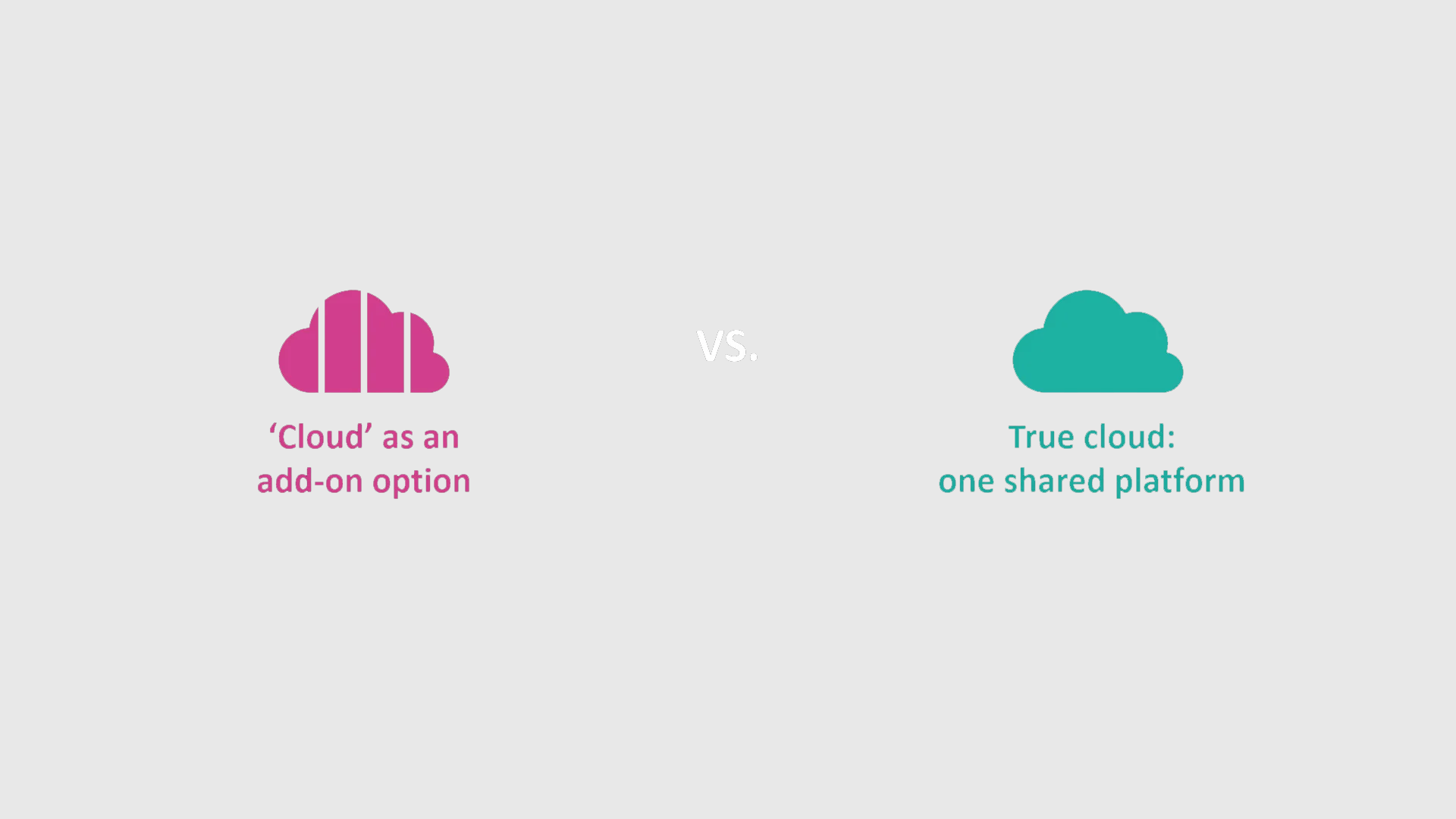
Why “cloud native” matters when it comes to your PACS
For many healthcare institutions, infrastructure and budget considerations can slow down the implementation of new technologies. But with the introduction of cloud native PACS, it is possible to add a lot of new and innovative capabilities, in a cost-effective way and with very limited impact on IT infrastructure. Cloud native PACS (Picture Archiving and Communication Systems) provide full PACS functionality anytime, anywhere, with multiple options for viewing and study sharing, significantly expanding the scope – and definition – of the traditional PACS.
What is it about cloud native PACS that makes them so transformative?
And what makes the cloud native architecture better than traditional or legacy PACS (which might be implemented in an external data center and also be labelled “cloud”)? These are some of the reasons:
![]() The difference between "cloud hosted" et "cloud native."
The difference between "cloud hosted" et "cloud native."
When we use the term "cloud" or "cloud-hosted," we're typically describing the use of application services that are located on cloud-based infrastructure. "Cloud native," on the other hand, is software that has been specifically designed, developed, and deployed in the cloud. Cloud native provides a powerful architecture that is optimized for speed, agility, and scalability.
![]() How cloud native PACS is developed.
How cloud native PACS is developed.
Unlike traditional PACS, a cloud native PACS is developed using the power of cloud computing as the starting point. Born and built in the cloud, cloud native PACS are designed to be OS independent, secure, fully web-based and always up-to-date. The architecture enables easy sharing of resources or data between the connected customers, and provides an easy growth path.
![]() How much a cloud native PACS costs.
How much a cloud native PACS costs.
Because it is managed as software-as-a-service, with payment for usage, cloud native PACS do not require a large initial investment, and automatically provide the capacity that is required. All updates happen automatically, and IT and user support is included. Because the implementation process is shortened and is limited to a connection to the native cloud, users benefit from significant reduction (as much as 50%) in the total cost of ownership of PACS1.
![]() How easily a cloud native PACS can be implemented.
How easily a cloud native PACS can be implemented.
A cloud native PACS is independent of any infrastructure, hardware, or local software constraints2. All that’s needed is the installation of a gateway to connect your hospital or clinic. There is no need for specialty viewers, servers, or software contracts. No software installation is needed to view high-quality DICOM lossless images via any browser on any device connected to the internet.
DOBCO Medical Systems and PACSonWEB
The goal for DOBCO, with the development of PACSonWEB, its leading cloud native PACS, was to offer full PACS functionality, available anywhere and anytime, via a single system. Because it’s cloud native, PACSonWEB is able to provide a wide range of functions and capabilities.
|
Peter Van Hoye, ICT Director, SJK, Belgium |
What can you do with PACSonWEB?
![]() Access your PACS system, from anywhere, with any device connected to the internet.
Access your PACS system, from anywhere, with any device connected to the internet.
Whether you want to enable remote reading for your radiologists, ensure the most up-to-date patient timelines, share studies with other centers and colleagues, or provide radiology services to patients in remote areas, PACSonWEB allows you to do so with ease, without requiring any additional hardware or a VPN connection.
![]() Follow patient timelines and access patient histories.
Follow patient timelines and access patient histories.
Gain a more-informed perspective on patients with access to all available online images and reports, as well as patient histories, for a complete cross-hospital timeline of the patient, at all times and locations, and on any device connected to the internet.
![]() Enable remote reading.
Enable remote reading.
Remote radiology reading is in demand like never before, due in part to the pandemic but also due to the preference of radiologists to be able to work across different locations, with all the functionality and performance of an in-hospital PACS no matter where they’re located. PACSonWEB ensures that they have the high levels of system performance they need, and safeguards the security of networks along with patient privacy.
![]() Share studies with other centers and colleagues.
Share studies with other centers and colleagues.
PACSonWEB makes it easy to share studies across care providers and institutions while ensuring patient privacy. You can share and import images with appropriate patient and study data manually or automatically, for hassle-free import and export of studies and effortless participation in screening programs.
![]() Provide radiology services to patients in remote areas.
Provide radiology services to patients in remote areas.
Centers without an on-site radiologist, or those that need extra support at certain times, can send images for interpretation by radiologists at larger centers, ensuring timely diagnosis and treatment for patients, no matter where they’re physically located.
Want to learn more about expanding the scope of your radiology options with PACSonWEB? Book a 15-minutes demo to see PACSonWEB in action.
References:
1. PACSonWEB customers experience up to a 50% reduction in the total cost of ownership (TCO). Data on file.
2. (Virtual) Hardware Requirements: the gateway can be installed on physical and virtual machines. Virtual machines are recommended.

